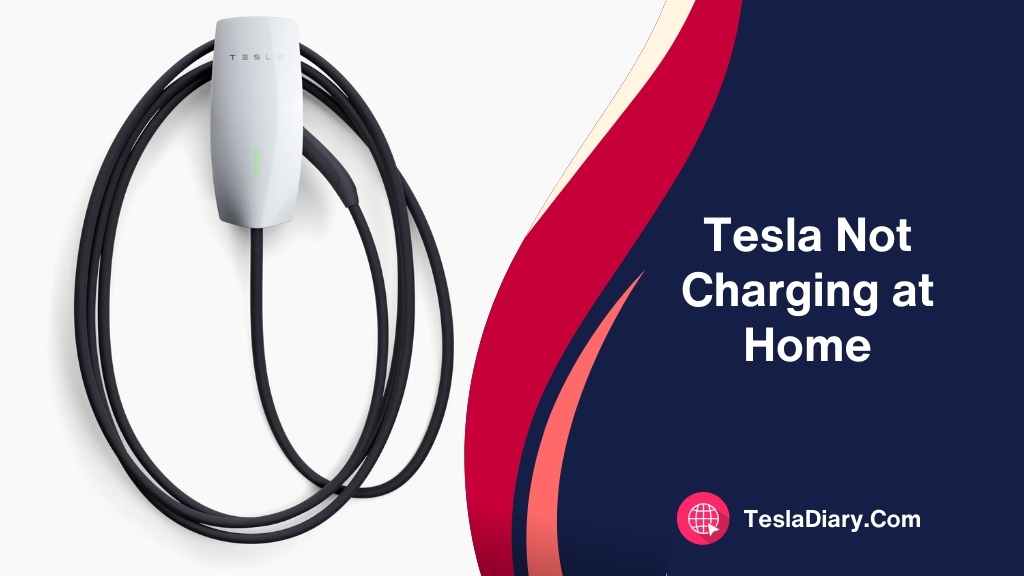If you own a Tesla electric vehicle and are experiencing issues with charging it at home, it can be a frustrating situation. A reliable home charging setup is essential for the convenience and practicality of electric vehicle ownership.
However, there can be various reasons why your Tesla is not charging as expected at home.
In this article, we will explore some common causes of this problem and offer troubleshooting steps to help you resolve the issue.

1. Check the Power Source
The first step in diagnosing charging issues with your Tesla is to ensure that your home’s electrical supply is functioning correctly. Here’s what you can do:
- Check if other electrical appliances and outlets in your home are working as expected. If they are not, there might be a power outage or electrical problem in your area.
- Verify that the outlet or charging station you are using is providing power. You can test this by plugging in another device or appliance to see if it works.
2. Inspect the Charging Cable and Charger
Your Tesla’s charging cable and charger play a crucial role in the charging process. Any damage or loose connections can lead to charging problems:
- Carefully inspect the charging cable for visible damage, such as frayed wires or bent pins.
- Ensure that the charger is securely plugged into both your Tesla and the wall outlet or charging station.
3. Check the Wall Outlet or Charging Station
Depending on your charging setup, you may use a standard household outlet or a dedicated charging station. Here’s what to look for:
- If you are using a standard outlet, make sure it is the correct type (e.g., NEMA 5-15 in North America) and is functioning properly.
- If you have a dedicated Tesla Wall Connector or another charging station, check that it is operational and properly configured.
4. Reset the Charging Equipment
Sometimes, a simple reset can resolve charging issues:
- Unplug the charger from both your Tesla and the wall outlet or charging station.
- Wait for a few seconds and then plug it back in.
- Additionally, try restarting your Tesla by pressing the brake pedal and simultaneously holding down both scroll wheel buttons on the steering wheel for about 10 seconds.
5. Check Charging Settings
Your Tesla offers various charging settings that you can configure to your preferences:
- Access your Tesla’s touchscreen display and navigate to the charging settings.
- Ensure that your charging limits, scheduled charging times, and charging modes are set correctly.
6. Software Updates
Tesla regularly releases software updates that can address various issues, including charging-related problems.
Check if your Tesla’s software is up to date and consider updating it if necessary.
7. Check for Faulty Components
If you suspect that any components such as the charging cable, adapter, or the charging port on your Tesla are faulty, it’s essential to address these concerns:
- Contact Tesla’s customer support or visit a Tesla service center for an inspection and potential replacement of faulty components.
8. Check Circuit Breakers
For those using a dedicated circuit or a higher-amperage outlet for charging, your home’s circuit breaker panel may have tripped:
Examine the circuit breaker panel and reset any tripped circuit breakers associated with your charging outlet.
9. Weather Conditions
Extreme weather conditions, whether extremely cold or hot, can impact charging efficiency:
In areas with extreme temperatures, consider preconditioning the battery before charging or make adjustments to your charging schedule to optimize performance.
10. Contact Tesla Support
If you have tried all the above steps and your Tesla still refuses to charge at home, it’s advisable to contact Tesla’s customer support or visit a Tesla service center:
Professional technicians can diagnose and resolve more complex charging issues effectively.
Wrapping Up
When your Tesla is not charging at home, it’s essential to perform a systematic troubleshooting process to identify and resolve the problem.
Safety should always be a top priority when dealing with electrical systems, and if you’re unsure about any of the steps or suspect a significant issue, consult a qualified electrician or Tesla service technician for assistance.
With proper troubleshooting and maintenance, you can ensure that your Tesla’s charging experience remains smooth and trouble-free.

